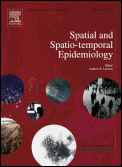
Spatial and Spatio-Temporal Epidemiology
Scope & Guideline
Mapping Health: Where Space Meets Time
Introduction
Aims and Scopes
- Spatial Epidemiology:
The journal emphasizes the study of how geographical, environmental, and social factors influence the distribution of diseases and health outcomes. - Methodological Advancements:
It highlights innovative statistical and computational methods, including Bayesian modeling, machine learning, and geostatistical techniques, for analyzing complex epidemiological data. - Public Health Applications:
Research published in the journal often seeks to inform public health strategies and interventions through the analysis of spatial patterns and trends in disease incidence. - Socioeconomic Determinants:
A consistent focus on understanding how socioeconomic factors correlate with health disparities across different geographic regions. - Infectious Disease Dynamics:
The journal frequently explores the temporal and spatial dynamics of infectious diseases, particularly in the context of emerging global health threats.
Trending and Emerging
- COVID-19 Research:
A significant increase in studies related to COVID-19, focusing on its spatial and temporal dynamics, highlighting the pandemic's impact on public health and the importance of real-time data analysis. - Climate Change and Health:
Emerging studies examining the effects of climate change on disease patterns, particularly vector-borne diseases, illustrate a growing concern for environmental factors influencing public health. - Social Determinants of Health:
An increasing trend towards exploring the influence of social determinants, such as race, poverty, and education, on health outcomes, reflecting a deeper understanding of health inequities. - Machine Learning Applications:
The application of machine learning techniques in epidemiological modeling is on the rise, showcasing a shift towards more sophisticated analytical methods capable of managing complex datasets. - Geospatial and Temporal Data Integration:
A trend towards integrating diverse datasets, including historical and real-time data, to enhance the understanding of health trends and inform policy decisions.
Declining or Waning
- Non-Infectious Disease Analysis:
There seems to be a decreasing emphasis on non-infectious diseases, such as chronic conditions, as the journal increasingly prioritizes infectious disease modeling, especially in the context of the COVID-19 pandemic. - Traditional Statistical Methods:
The reliance on traditional statistical methods appears to be waning, with a noticeable shift towards machine learning and advanced Bayesian approaches, indicating that simpler methodologies are becoming less favored. - Geographical Accessibility Studies:
Research focusing on geographical accessibility to healthcare services, while still relevant, is less frequently featured compared to studies directly linking spatial data to disease prevalence and transmission.
Similar Journals
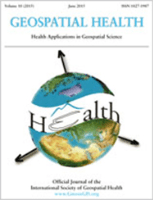
Geospatial Health
Exploring the Intersection of Geography and Health.Geospatial Health is an esteemed academic journal dedicated to the intersection of geography, health policy, and social sciences, published by UNIV NAPLES FEDERICO II. Since its inception in 2006, this Open Access journal has been pivotal in disseminating valuable research that examines health-related issues through a geographical lens. With an impact factor that places it in the Q3 category across multiple disciplines including Geography, Health Policy, and Medicine, it serves as a vital resource for researchers, practitioners, and scholars alike. Located in Naples, Italy, the journal aims to foster interdisciplinary collaboration and provide insights that can influence policy and practice in health and environmental sectors. With its commitment to accessibility and high-quality research, Geospatial Health continues to enrich the fields it represents, inviting contributions that explore the intricate dynamics between health and spatial determinants.

Journal of Spatial and Organizational Dynamics
Connecting Spaces and Organizations for Global ImpactJournal of Spatial and Organizational Dynamics is a distinguished peer-reviewed journal published by the CIEO, RESEARCH CENTER SPATIAL & ORGANIZATIONAL DYNAMICS, based in Faro, Portugal. Since its inception in 2013, this open access journal has aimed to advance the fields of spatial and organizational studies by providing a platform for innovative research that addresses the dynamic interactions between spatial environments and organizational practices. With a diverse scope that encompasses topics such as urban planning, organizational behavior, and geospatial analysis, the journal fosters interdisciplinary dialogue and insights critical for professionals and academics alike. The journal's commitment to accessibility ensures that research findings are readily available to a global audience, empowering researchers, students, and practitioners to explore the intricacies of spatial dynamics within organizational contexts. By contributing to the growing body of literature in this vital area, the Journal of Spatial and Organizational Dynamics stands as an essential resource for those dedicated to understanding and shaping the interplay between spaces and organizations.
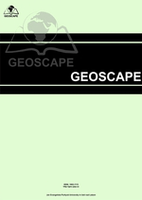
GeoScape
Navigating the complexities of geography and conservation.GeoScape is a distinguished open-access journal published by SCIENDO, operating since 2006 and aimed at fostering knowledge in the fields of Ecology, Geography, Urban Studies, and Nature and Landscape Conservation. Based in Warsaw, Poland, the journal maintains a robust academic presence with an impact factor reflective of its quality, prominently positioned in the Q3 category for multiple significant subject areas as of 2023. With its commitment to disseminating high-quality research, GeoScape holds notable Scopus rankings, including a rank of #94 in Urban Studies and #213 in Ecology, signifying its contribution to environmental science discussions. The journal serves as an essential resource for researchers, professionals, and students seeking to advance their understanding of contemporary ecological challenges and urban development in an accessible format.

Earth Surface Dynamics
Innovating Research in Geophysical ProcessesEarth Surface Dynamics, published by COPERNICUS GESELLSCHAFT MBH, is a pioneering open-access journal dedicated to the study of geophysical processes and Earth-surface dynamics. Since its inception in 2013, this journal has established itself as a vital platform for disseminating high-quality research in the fields of Earth-Surface Processes and Geophysics, earning a prestigious Q1 ranking in both categories as of 2023. With an impressive Scopus ranking of #33 out of 179 for Earth-Surface Processes and #31 out of 165 for Geophysics, it captures the attention of leading researchers and professionals in the Earth sciences community. The journal is committed to providing a forum for innovative and interdisciplinary research that enhances our understanding of terrestrial environments and their dynamics, making it an essential resource for students, academics, and industry professionals alike. Please visit our journal to explore groundbreaking research and contribute to the ongoing dialogue in the dynamic field of Earth science.
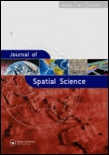
Journal of Spatial Science
Exploring the Frontiers of Spatial KnowledgeThe Journal of Spatial Science, published by Taylor & Francis Ltd, serves as a prominent platform for the dissemination of research in the interdisciplinary fields of geography, atmospheric science, and energy. With an ISSN of 1449-8596 and an E-ISSN of 1836-5655, this journal has established itself as a vital resource since its inception in 2004, boasting an impressive convergence period extending to 2024. Recognized in the Q3 quartile for Atmospheric Science and Energy (miscellaneous), and achieving a Q2 classification in Geography, Planning and Development in 2023, the journal not only reflects the evolving complexities of spatial science but also underscores its increasing relevance in addressing contemporary global challenges. The journal holds a commendable position in Scopus rankings, with notable placements in various categories, further highlighting its academic significance. Researchers, professionals, and students are encouraged to engage with the rich content offered, as the Journal of Spatial Science remains committed to advancing knowledge and fostering discussions pertinent to spatial analysis and its applications.
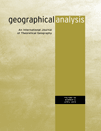
GEOGRAPHICAL ANALYSIS
Charting New Territories in Geographical InquiryGEOGRAPHICAL ANALYSIS, published by WILEY, is a premier scholarly journal that has been at the forefront of geographical and earth-surface research since its inception in 1969. With an ISSN of 0016-7363 and an E-ISSN of 1538-4632, this journal has established itself as an essential resource for researchers and professionals in the fields of Earth-Surface Processes and Geography, Planning and Development, achieving impressive rankings of 13th and 60th in their respective categories according to Scopus, placing it in the Q1 quartile for both. The journal is renowned for its rigorous peer-reviewed articles that contribute valuable insights into spatial analysis, environmental impacts, and urban planning, thus fostering a deeper understanding of geographical phenomena. With access options available through traditional subscriptions, GEOGRAPHICAL ANALYSIS continues to serve as a critical platform for the dissemination of cutting-edge research and innovative methodologies, ultimately shaping the future of geographical inquiry and application.

Infectious Disease Modelling
Fostering Collaboration in Infectious Disease Research WorldwideInfectious Disease Modelling is a leading academic journal published by KEAI PUBLISHING LTD, dedicated to advancing the field of infectious disease research through rigorous mathematical modeling and analysis. Launched as an Open Access journal in 2016, it serves a global audience with unrestricted access to its content, promoting collaboration and knowledge dissemination among researchers, professionals, and students in various fields. The journal has garnered recognition for its significant contributions, achieving impressive rankings in the 2023 category quartiles—Q1 in both Applied Mathematics and Health Policy, and Q2 in Infectious Diseases. With exceptional Scopus rankings—including being placed in the 98th percentile in both Applied Mathematics and Health Policy—this journal stands at the forefront of its discipline, addressing critical health challenges through innovative research. Operating out of Beijing, China, it is positioned to bridge the gap between mathematical approaches and practical health solutions, making it an invaluable resource for stakeholders in academia and the healthcare industry.

JOURNAL OF AGRICULTURAL BIOLOGICAL AND ENVIRONMENTAL STATISTICS
Exploring the Intersection of Statistics and SustainabilityJOURNAL OF AGRICULTURAL BIOLOGICAL AND ENVIRONMENTAL STATISTICS, published by SPRINGER, serves as a vital platform for advancing knowledge in the quantitative study of agricultural, biological, and environmental phenomena. With an ISSN of 1085-7117 and an impressive e-ISSN of 1537-2693, this journal encompasses a broad scope of research that applies statistical methodologies to address complex challenges within the field. Operating out of the United States, the journal demonstrates its academic rigor and relevance, evidenced by its Q2 rankings across multiple categories in 2023, including Agricultural and Biological Sciences, Applied Mathematics, and Environmental Science. Researchers and practitioners in these fields will find significant value in the journal’s focus on integrating statistical techniques and innovative analyses, fostering interdisciplinary collaboration. Published continuously since 1996, it remains committed to publishing high-quality articles that not only contribute to theoretical advancements but also offer practical solutions, thereby enhancing the understanding of critical issues in agriculture, biology, and environmental science.
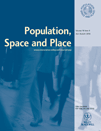
Population Space and Place
Exploring the Dynamics of Population and SpacePopulation Space and Place is an esteemed academic journal published by WILEY, dedicated to advancing the fields of demography and geography, planning, and development. With an impressive 2023 impact factor and categorized in the top quartile (Q1) for both demography and geography, this journal serves as a vital platform for researchers, professionals, and students seeking to explore the spatial dimensions of population dynamics. Founded in 2004 and running through 2024, it has established itself as a significant contributor to scholarly discussions, evidenced by its high Scopus rankings, including rank #18 out of 139 in demography and #165 out of 821 in geography and planning. While the journal currently does not offer open access, it remains a key resource for those involved in academic research and policy formulation. With its focus on the interplay between population trends and spatial analytics, Population Space and Place is essential for anyone aiming to understand the complexities of population geography in a rapidly changing world.

Spatial Demography
Mapping the Dynamics of DemographySpatial Demography is a vital academic journal published by Springer International Publishing AG, focusing on the intersection of spatial analysis and demographic research. With its ISSN 2364-2289 and E-ISSN 2164-7070, this journal aims to advance understanding of population dynamics through innovative methodologies and spatially explicit data, offering a platform for researchers, professionals, and students engaged in demography, geography, and urban studies. While it does not currently operate under an open access model, Spatial Demography maintains a rigorous peer-review process to ensure high-quality publications that contribute significantly to the field. Given the growing importance of spatial data in demographic research, the journal serves as an essential resource for those looking to explore how spatial attributes influence demographic processes and patterns worldwide. The official address of the publisher is Gewerbestrasse 11, Cham CH-6330, Switzerland.